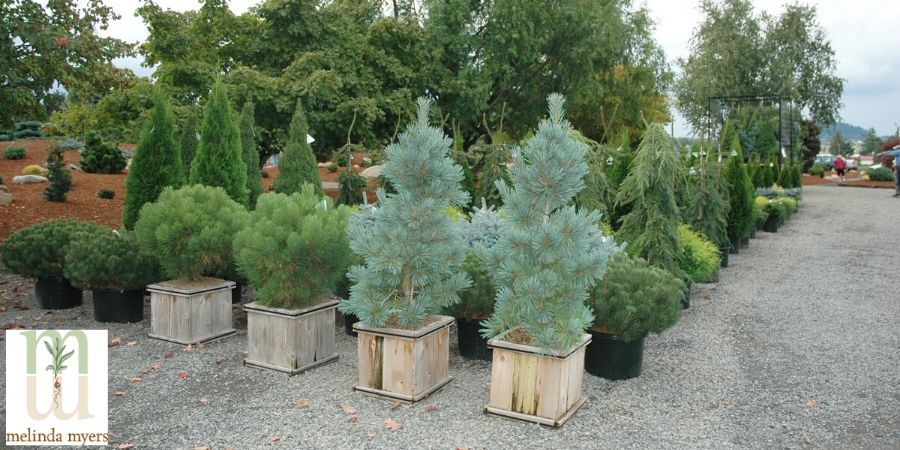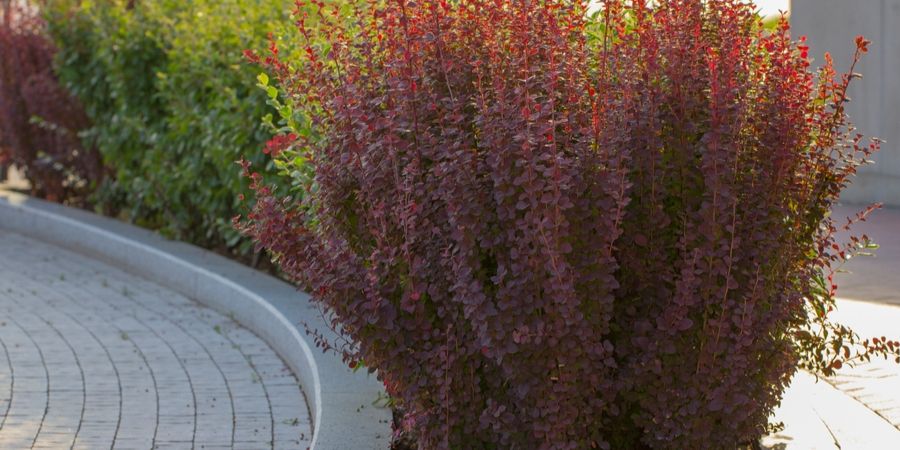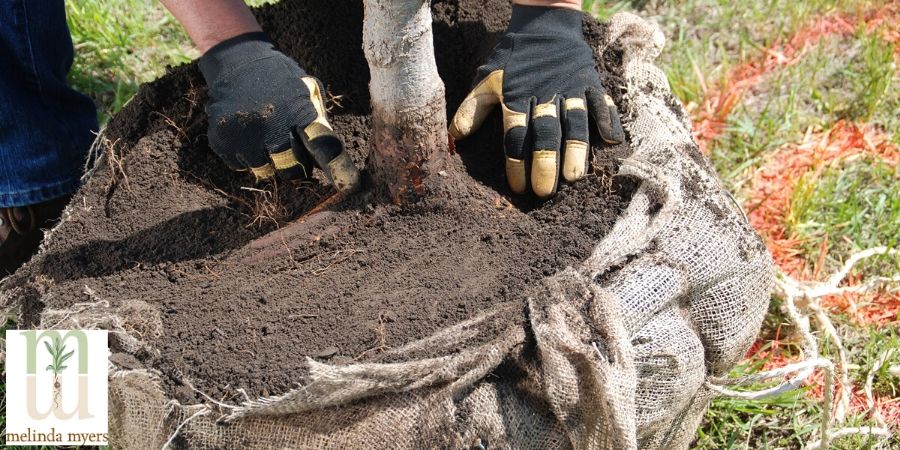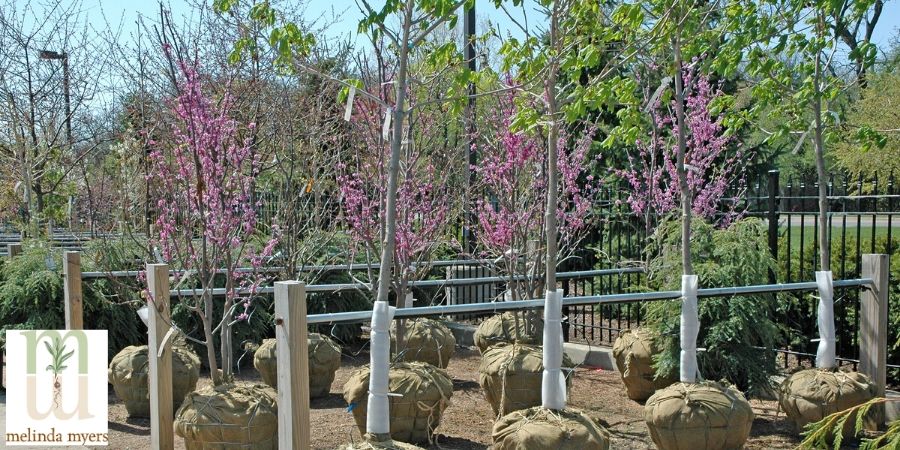Do’s & Don’ts for Trees and Shrub Planting and Maintenance
- horticulturist and gardening expertMay 2, 2020
Take a moment to think about the trees in your life. Perhaps it was one you liked to climb as a child, sit beneath and enjoy the shade or monitor the change of seasons by its emerging spring leaves, colorful flowers, and blazing fall foliage. Trees and their smaller counterpart, shrubs, fill our memories and gardens. This is why investing in their well being from planting to maturity is worth the effort.
Trees and shrubs tend to be some of the more expensive and hopefully long-lived elements of our landscapes. We invest some money, time tending and years waiting for them to reach their full glory. Make sure you get the most out of this investment in time and money by properly planting and maintaining your trees and shrubs.
I have been lucky enough to work in horticulture and with gardeners for quite a few years. In that time I have seen common mistakes that shorten the life of trees and shrubs, increase time spent on corrective maintenance and result in failures that convince people they can’t grow plants.

Changing some habits or maybe it’s just fine tuning the way you maintain your trees and shrubs, can greatly improve your results. Take a look at this list of Don’ts and Do’s then make needed adjustments in your tree and shrub planting and maintenance. You will be pleasantly surprised at the difference adopting these changes can make in the beauty, longevity and enjoyment of your landscape.
So here we go:
Don’t buy trees and shrubs that will eventually outgrow their location.
Those small plants purchased at the nursery will eventually grow to their full size. Pruning a large plant down to a fit into a much smaller space can negatively impact its health and beauty. It also generates lots of twigs and branches that need to be managed. Both result in more work for you.
Do check all the information on the plant tags before purchasing any plant.
Consider the height and width when determining the amount of space the mature plant will need. Space trees and shrubs based on their mature size. Fill the voids between young plants with annuals and perennials that can easily be moved as the trees and shrubs begin filling in.
Don’t buy invasive plants that spread from the landscape into natural areas such as forests, wetlands and prairies.
These invaders crowd out the native plants that the birds, beneficial insects and wildlife depend upon. Many like buckthorn, honeysuckle and barberry create tick friendly habitats increasing the threat from tick-borne diseases.
Do buy native and non-invasive plants suited to your growing conditions.
Check your local Department of Natural Resources, the United States Department of Agriculture and U.S. Forest Service websites for lists of invasive plants before going to the garden center, nursery or ordering on-line. Whatever plant you select make sure it is suited to your climate, growing conditions and won’t leave the confines of your landscape.

Don’t purchase aggressive plants.
These don’t invade our natural spaces but can take over a garden bed or corner of your landscape crowding out nearby desirable plants. Aggressive plants require lots of time and effort to confine their growth and manage the excess trimmings. And what is left is often unsightly and it can take years to eliminate these bullies from your garden.
Do select plants with a growth habit and rate of growth suitable for your garden location.
If a plant is described as spreads rapidly, reseeds freely and grows quickly think twice before investing. If a plant sounds too good to be true, it probably is.
Don’t plant trees and tall shrubs under overhead utilities.
Trees growing too close or into power lines can create shock and fire hazards as well as power outages. The tall plants allow children access to the lines putting them in danger. When trees and overhead utilities are in conflict the power company will need to prune or remove your plant. Their goal is safety not maintaining the beauty of your plants.
Do check for overhead utilities before planting.
Check with your local utility company for their guidelines when planting anywhere near overhead utilities. In general, you should never plant a tree or large shrub that can grow to within 25 feet of a power line.
Don’t dig before checking for underground utilities.
If you damage a line you are responsible for the repair. Hitting a power, cable or phone line can be costly, cause injuries and in some cases death.
Do make the call to 811 at least three business days before putting the first shovel in the ground.
This free service will contact all the appropriate companies who will mark the location of their underground utilities in the designated work area. This reduces the danger and inconvenience of accidentally knocking out power, cable or other utilities as you enhance your landscape.
Don’t move trees and shrubs by their trunk or stems.
Using them as a handle or lever may damage the roots critical for establishment and longevity of your plants.
Do move trees and shrubs by lifting the container or rootball of balled and burlapped (B&B) trees and shrubs.
Use a fabric sling, saucer sled or wheelbarrow to move large plants into place. Ask for help when wrangling larger plants. An extra set of hands will lighten the load and help keep your plants safe. Better yet, have the nursery deliver and place large plants in the landscape. Remember, this is a long term long-term investment you want to get off to the best possible start.

Don’t amend the soil in the planting hole.
Adding compost, peat, sand or other material to the soil creates a very different growing environment than the surrounding soil. The plant’s roots tend to grow in the more ideal soil and fail to expand outward. Roots of a healthy tree extend 2 to 5 times the height of the tree beyond its trunk. So amending the small area around the root ball doesn’t take care of the tree’s long term needs.
Do use the existing soil to backfill when planting trees and shrubs.
Research has found that disrupting the soil and roughening the sides of the planting hole encourages the roots to explore the surrounding soil. Berms, dry wells and growing plants that tolerate poorly drained soils can help in severely compacted soils that stay too wet for too long.
Don’t plant trees and shrubs too deep.
Covering the crown (point where roots meet the stems) and trunk flare (point where roots curve away from the trunk) can lead to girdling roots, rot and shorten the life of your plants.
Do dig a saucer shaped hole with the deepest part being the same as or slightly less than the height of the root ball.
Measure from the tree’s trunk flare or shrub’s crown to the bottom of the root ball. These should be at or slightly above the soil surface once planted. Do not dig deeper as soil settles and the tree or shrub will end up planted too deep.
Don’t plant these trees in fall.
American hornbeam, ginkgo, larch, magnolia, hemlock, sweetgum, tuliptree, fruit trees and others that are slow to establish do better when planted in spring. This also applies to broadleaf evergreens like rhododendron and narrow leafed evergreens like yews.
Do plant other trees and shrubs, especially those with shallow roots, in fall when the soil is warm, air is cool and conditions are better for the plant to begin adapting to its new location.
Conifers benefit from an earlier start in late summer. And if the weather is suitable for planting, you will be more comfortable and likely to do a better job.

Don’t heavily prune newly planted trees and shrubs.
The old practice was to remove one third of the top growth to compensate for any root loss. Research found that the more branches and stems left on the plant, meant more leaves to produce energy to help the plants get established.
Do remove any damaged, broken and rubbing branches at planting.
Make the cut above a healthy outward facing bud or branch. The clean cut will close more quickly reducing the risk of insects and diseases moving in and harming your plant.
Don’t plant grass close to the base of trees and shrubs.
Grass is a big competitor for water and nutrients. Plus you increase the risk of damaging the plant with the mower or weed whip when cutting the lawn and trimming grass next your trees and shrubs.
Do mulch the area under and around the plant.
Spread a 2 to 3 inch layer of woodchips or shredded bark over the soil surface. The mulch helps conserve moisture, suppress weeds and improve the soil as it decomposes. This also eliminates the need to hand trim making lawn maintenance quicker and easier.
Don’t pile mulch over the trunk of trees or base of shrubs.
Mulch piled up on the trunk and stems can lead to girdling roots as well as insect, disease and animal damage.
Do pull the mulch back several inches from the trunk of the tree and base of the shrubs.
Check regularly as rainfall and other maintenance practices can cause the mulch to shift back against the tree trunk and shrub stems.
Don’t fertilize trees and shrubs unless they need a nutrient boost.
These plants acquire much if not all of the necessary nutrients from the surrounding lawn and garden beds. When you fertilize your lawn and gardens the tree and shrub roots growing in these areas absorb some of the nutrients.
Do have your soil tested before fertilizing trees and shrubs.
The results will tell you what type if any nutrients you need to add. If this information is not available, use a low nitrogen slow release fertilizer like Milorganite. It slowly releases nutrients over a longer period of time encouraging slow steady growth that is more drought-tolerant and less susceptible to insect pests and disease. Plus it contains 85% organic matter that feeds the soil as well as the plants.
Don’t prune without a purpose.
If you selected the right plant for the location, provided ample space for it to grow you should only need to do minimal pruning to keep it healthy and looking its best. Severe pruning can result in a large flush of growth that will require even more pruning in the near future. Pruning at the wrong time can eliminate flowering and late summer pruning can stimulate late season growth that can be winterkilled.
Do prune to establish a strong framework, improve flowering, fruiting and bark color and to remove damaged, diseased, and hazardous branches.
Late winter or early spring before growth begins is a good time to prune most trees and shrubs. Prune spring flowering shrubs soon after they bloom for the biggest floral display.
Don’t top trees.
When large branches are drastically cut back to the trunk of the tree it results in ugly trees with poor structure that are more susceptible to storm damage, insects and disease.
Do select the right size tree for the location to eliminate the need for such drastic pruning.
Start training your tree at an early age to establish a strong framework. Consider hiring an International Society of Arboriculture Certified Arborist to provide safe and correct pruning for trees of all ages. This is a voluntary, non-governmental certification that documents an individual’s knowledge of tree care. Find a certified arborist near you.

